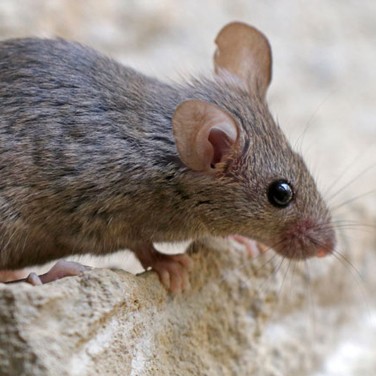Using CRISPR to Control Invasive Rodents
By Kevin Ritchart
Scientists from the University of California, San Diego (UCSD), are closing in on the creation of a genetic means of controlling rodent populations that can destroy island habitats and overrun crops.
A January 23 article in Nature reported that female mice with an engineered gene drive could pass a specific gene modification to more than 80 percent of their offspring. The normal rate of genetic trait inheritance is 50 percent, a process first discovered by Gregor Mendel in 1865.
“What we’ve done is engineered a gene that can be inherited more frequently than it would be by normal Mendelian inheritance,” said Kimberly Cooper, PhD, a developmental geneticist at UCSD. “My graduate student likes to call it ‘cheating Mendel.’”
These types of genetic “cheats” have been proposed to eradicate disease-carrying mosquitoes and other invasive species by targeting the genes involved in reproduction. Gene drives could also be used to prevent pests from carrying diseases like malaria. So far, researchers have been successful in making gene drives for fruit flies and yeasts as well as mosquitoes.
Despite those successes, researchers have yet to build a gene drive that works in a mammal. Dr. Cooper and her UCSD team aren’t claiming to have done so yet either, since they’ve only produced one generation of cheater mice. To be considered successful, a gene drive must exceed the Mendelian inheritance rates over multiple generations.
How It Works
Scientists use a molecular tool called CRISPR/Cas9 to insert engineered gene drives into a precise location in an organism’s DNA. The gene drive contains instructions for making the Cas9 enzyme that cuts the DNA at a particular spot and a guide RNA that leads the enzyme to a particular gene. When Cas9 cuts into the DNA, cells repair the break by copying the version of the gene that contains the gene drive from its sister chromosome. The copying process ensures that all offspring will inherit the gene drive.
To create the cheater mice, Dr. Cooper and her team built half of a gene drive: they inserted instructions for making the guide RNA, but not the Cas9 enzyme, into the Tyr gene of mice. The Tyr gene produces the enzyme tyrosinase, which is involved in making pigments. The guide RNA typically leads the Cas9 enzyme to slice and convert normal genes into a gene drive. But this modified gene drive, dubbed “CopyCat,” was unable, with the Cas9, to actually cut the mice’s DNA.
The mice with the CopyCat gene drive were bred with mice carrying the gene needed to make Cas9 on another chromosome. Mice that inherited both the CopyCat guide RNA and the Cas9 gene were able to cut DNA, creating the first generation of cheater mice in the lab. Since mice in the wild don’t naturally make Cas9, the gene drive would not be spread to other animals.
Timing is the Key
Another limitation of this gene drive’s progress is that it only works in female mice. According to researchers, the gene drive only works during the brief period of meiosis that produces eggs and sperm. During meiosis, the number of an organism’s chromosomes is halved to create either eggs or sperm. As meiosis occurs, chromosomes can pair up and exchange information in a process known as recombination.
In female mammals, the chromosome pairing process during recombination lasts longer than in males, which gives the gene drive more time to work. If the DNA is cut while the chromosomes are unpaired, mutations can destroy the site of the Cas9 cut and make it impossible for the enzyme to work.
Recombination is the perfect time to cut the DNA and copy a gene drive, according to Cooper. CopyCat successfully converted its sister chromosome to carry the gene drive up to 72 percent of the time, potentially resulting in its presence in 86 percent of the offspring. While that clearly eclipses the Mendelian inheritance rules, it falls short of the 95 percent copying rate and nearly 100 percent inheritance found in some experiments with mosquitoes.
In future work, Dr. Cooper and her team hope to adjust the timing of Cas9 enzyme cuts for male mice, so that both sexes are more readily able to pass on the gene drive.
